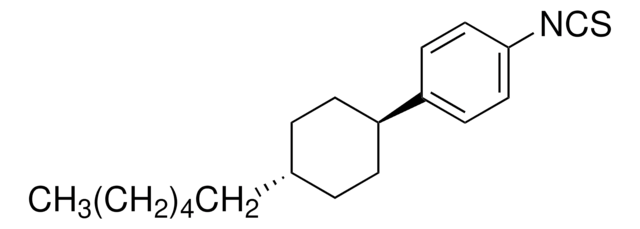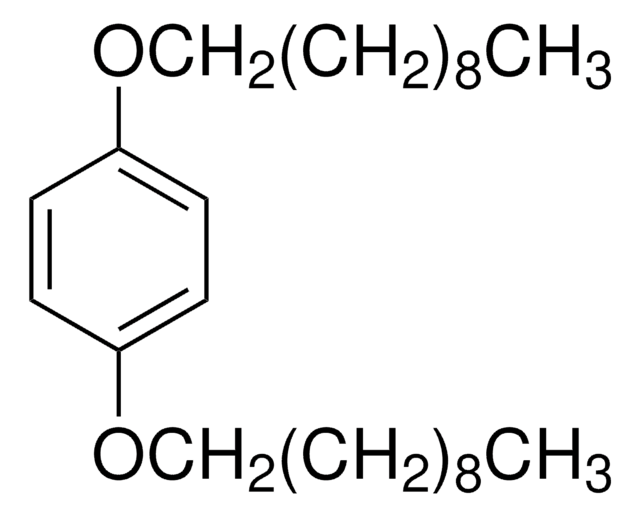Kluczowe dokumenty
922277
TpOx-B15C5
Synonim(y):
TpOx-Crown Ether Series
About This Item
Polecane produkty
opis
Polymorph crystalline phase: Solid, Discotic Liquid Crystal, Isotropic
Poziom jakości
rozpuszczalność
soluble (DCM,THF > 1 mg /mL, MeCN, DMSO < 1 mg /mL)
λmaks.
270 nm in ethyl acetate
εmax
86,000 M-1cm-1 in ethyl acetate
fluorescencja
λem 457 nm, quantum yield 0.43 (pSS(nm) = 187; Fluorescence lifetime (ns) = 4.23)
temp. przechowywania
2-8°C
Powiązane kategorie
Opis ogólny
Zastosowanie
- Metal cation sensing
- Fluorescent dye staining
- Organic semiconductor for organic electronic and photonic applications
- Multi-photon microscopy
Kod klasy składowania
11 - Combustible Solids
Klasa zagrożenia wodnego (WGK)
WGK 3
Temperatura zapłonu (°F)
Not applicable
Temperatura zapłonu (°C)
Not applicable
Wybierz jedną z najnowszych wersji:
Certyfikaty analizy (CoA)
Przepraszamy, ale COA dla tego produktu nie jest aktualnie dostępny online.
Proszę o kontakt, jeśli potrzebna jest pomoc Obsługa Klienta
Masz już ten produkt?
Dokumenty związane z niedawno zakupionymi produktami zostały zamieszczone w Bibliotece dokumentów.
Nasz zespół naukowców ma doświadczenie we wszystkich obszarach badań, w tym w naukach przyrodniczych, materiałoznawstwie, syntezie chemicznej, chromatografii, analityce i wielu innych dziedzinach.
Skontaktuj się z zespołem ds. pomocy technicznej



![6-[4-(4-Cyanophenyl)phenoxy]hexyl methacrylate 96%](/deepweb/assets/sigmaaldrich/product/structures/225/164/3dc33b5e-baf4-44f2-9e81-770c92250f7b/640/3dc33b5e-baf4-44f2-9e81-770c92250f7b.png)




![1,3-Bis(5-bromo-2-thienyl)-5,7-bis(2-ethylhexyl)-4H,8H-benzo[1,2-c:4,5-c′]dithiophene-4,8-dione](/deepweb/assets/sigmaaldrich/product/structures/608/836/0c44bb4d-b62d-4bc8-b80c-920ee4d164ea/640/0c44bb4d-b62d-4bc8-b80c-920ee4d164ea.png)